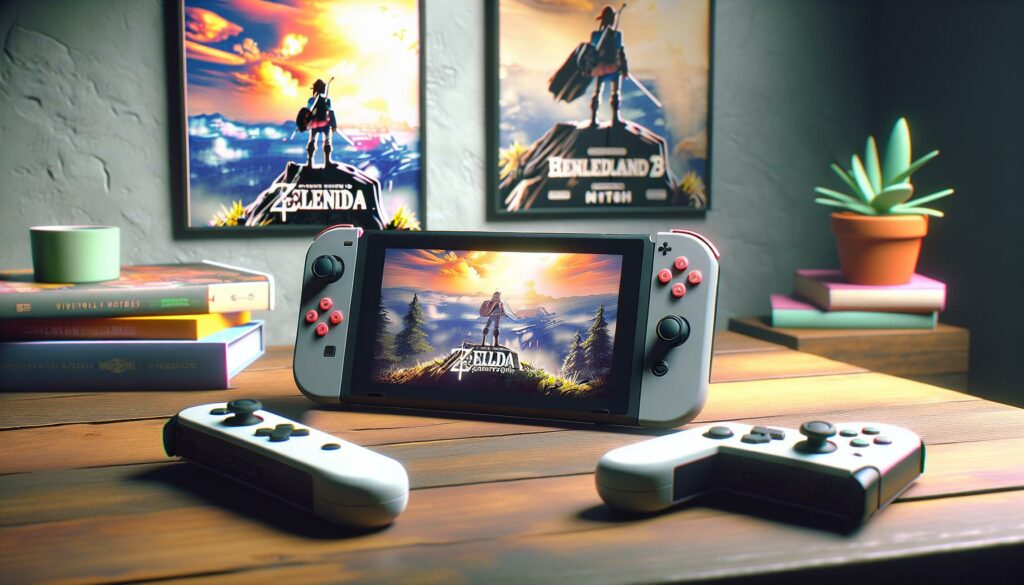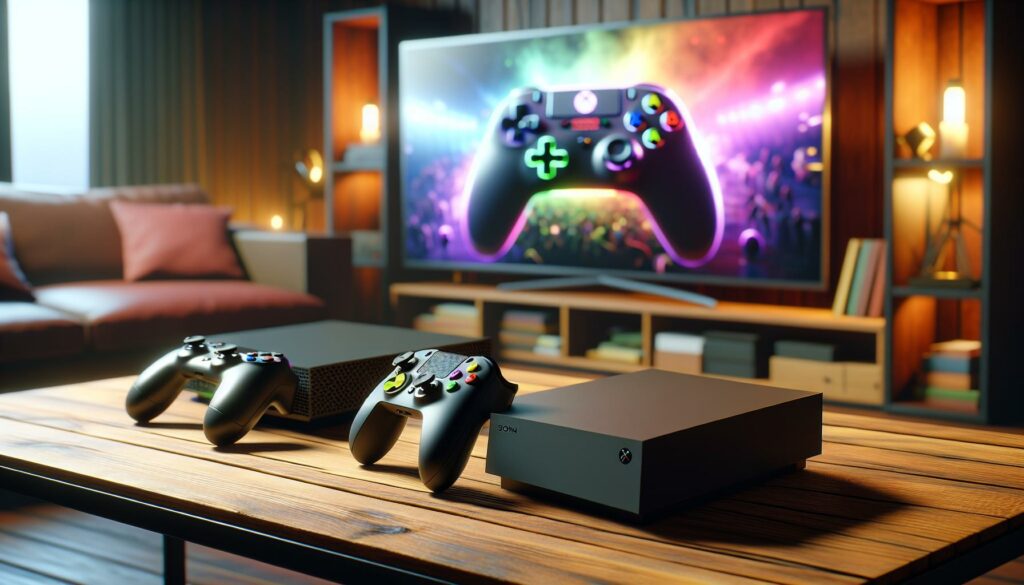As a lifelong gamer, I’ve often found myself pondering the capabilities of the Nintendo Switch. With its unique blend of portability and power, it’s no surprise that fans are curious about whether this beloved console can support 4K gaming. The allure of stunning visuals and enhanced performance has many of us wondering if Nintendo has finally embraced this next-gen resolution.
In this article, I’ll dive into the details surrounding the Nintendo Switch and its potential for 4K gaming. We’ll explore the current specs, official statements from Nintendo, and what it could mean for the future of gaming on this platform. Join me as we unravel the mystery and discover if the Switch truly has what it takes to deliver that eye-popping 4K experience.
Key Takeaways
- Nintendo Switch Specifications: The Nintendo Switch features a 6.2-inch touchscreen with a resolution of 1280 x 720 pixels in handheld mode and supports a maximum output of 1080p when docked.
- 4K Gaming Support: Currently, the Nintendo Switch does not support native 4K resolution. It is designed primarily for 1080p output, emphasizing gameplay versatility over high-resolution graphics.
- Growing Demand for 4K: As the gaming industry shifts towards higher resolutions, players are increasingly seeking enhanced visual experiences, driving expectations for consoles capable of delivering 4K gaming.
- Official Statements: Nintendo has confirmed that there are no immediate plans for a 4K-capable model, maintaining focus on the unique portable features of the Switch.
- Community Reactions: Player feedback is mixed, with some gamers desiring sharper visuals for modern titles, while others appreciate the Switch’s gameplay experience and innovation over graphical fidelity.
- Future Predictions: Speculation exists about a potential “”Nintendo Switch Pro”” to meet demand for enhanced performance and 4K capability, although no official announcements have been made regarding such developments.
Is Nintendo Switch 4k
The Nintendo Switch launched on March 3, 2017, as a hybrid gaming console, blending home and portable gaming experiences. The device features a 6.2-inch touchscreen display with a resolution of 1280 x 720 pixels in handheld mode and outputs up to 1080p in docked mode.
The console offers a diverse library of games, including popular titles such as “”The Legend of Zelda: Breath of the Wild,”” “”Super Mario Odyssey,”” and “”Animal Crossing: New Horizons.”” Users can play in four different modes: handheld, tabletop, docked, and in TV mode, providing versatility for varied gaming experiences.
The Switch utilizes a custom NVIDIA Tegra processor, allowing for smooth gameplay and efficient power consumption. The battery life lasts approximately 4.5 to 9 hours, depending on the game and usage conditions. Additionally, the device includes detachable Joy-Con controllers that enhance multiplayer gaming.
Nintendo frequently updates the Switch with new features and enhancements, including improvements to online services and game compatibility. The introduction of the Nintendo Switch OLED model in October 2021 brought a larger and more vibrant display, enhancing the overall gaming experience.
Nintendo’s focus remains on creativity and accessibility, making the Switch a popular choice among casual and hardcore gamers alike.
Current Specifications of Nintendo Switch
The Nintendo Switch combines innovative technology with user-friendly design. Understanding its specifications helps clarify its performance capabilities, including the graphics and resolution.
Screen Resolution
The Nintendo Switch features a 6.2-inch touchscreen display that provides a resolution of 1280 x 720 pixels in handheld mode. When docked, it supports a maximum output of 1080p, offering an improved visual experience on larger screens. While these resolutions fall short of 4K, the vibrant colors and sharp detailing in popular titles maintain a captivating gaming experience. The OLED model, released in October 2021, enhances this with a 7-inch screen that boasts richer colors and improved contrast, making visuals even more engaging.
Graphics Performance
The graphics performance of the Nintendo Switch stems from its custom NVIDIA Tegra processor. This architecture ensures smooth gameplay across various titles, even in demanding scenarios. The Switch efficiently balances graphics quality and battery life, giving gamers approximately 4.5 to 9 hours of playtime. While the console does not natively support 4K resolution, certain titles utilize dynamic resolution scaling to enhance visual fidelity when docked. Through regular software updates, Nintendo continually optimizes graphics performance, ensuring that players enjoy the best experience possible, even if true 4K remains out of reach.
The Demand for 4K Gaming
The demand for 4K gaming continues to grow as players seek enhanced visual experiences and immersive gameplay. The shifting landscape of gaming technology highlights the importance of staying competitive in the evolving market.
Benefits of 4K Resolution
- Enhanced Visuals: 4K resolution, offering four times the detail of 1080p, creates clearer, crisper images. This visual fidelity elevates the gaming experience, especially in expansive open-world environments where every detail matters.
- Improved Texture Quality: With increased pixels, textures appear richer and more lifelike. Games can present intricate details, enhancing realism and drawing players deeper into their virtual worlds.
- Larger Screen Compatibility: Many gamers invest in larger displays to fully enjoy their content. 4K resolution accommodates these sizes without sacrificing image quality, ensuring that visuals remain sharp across various screen dimensions.
- Future-Proofing: As more titles adopt and support 4K graphics, having a console capable of 4K gaming ensures longevity. Gamers can stay relevant in an industry that progressively embraces higher resolutions.
- Increased Immersion: High-definition visuals contribute to immersive gameplay. Players can better appreciate the visual storytelling and artistry that developers put into their games.
- Growing Adoption of 4K: Many newly released consoles, like the PlayStation 5 and Xbox Series X, support 4K resolution. This trend elevates players’ expectations, pushing competitors like Nintendo to reassess their offerings.
- Cloud Gaming Services: Platforms like NVIDIA GeForce Now and Google Stadia provide 4K gaming experiences without requiring high-end hardware. These services make superior graphics accessible, expanding the market for high-resolution gaming.
- Emphasis on Performance: Gamers prioritize performance alongside graphics, seeking higher frame rates and smoother gameplay. Current consoles balance 4K resolution with optimal performance, creating an overall enhanced gaming experience.
- Increased Game Optimization: Many game developers optimize their titles for 4K, using techniques like dynamic resolution scaling. This adaptability ensures that high-quality graphics reach a broader audience, even on less powerful hardware.
- VR and AR Integration: The rise of virtual and augmented reality applications increases demand for high-resolution graphics. Players expect even more immersive experiences in these realms, driving the need for consoles capable of delivering 4K quality.
Is Nintendo Switch 4K?
The Nintendo Switch does not support native 4K resolution. Current specifications and official statements clarify its capabilities and limitations regarding 4K gaming.
Official Statements from Nintendo
Nintendo confirmed the Switch’s output limitations directly. The existing hardware supports a maximum of 1080p resolution while docked. In a notice, Nintendo emphasized that the current models, including the OLED version, are designed primarily for 1080p, focusing on gameplay versatility rather than pushing graphical boundaries. As of now, no plans for a 4K model or update have been officially announced, highlighting the company’s commitment to maintaining the portable features that define the Switch.
Community and Expert Opinions
Community feedback reflects mixed sentiments toward the absence of 4K. Some gamers express disappointment, craving sharper visuals, particularly with modern titles designed for higher-end consoles. Conversely, others appreciate the Switch’s unique qualities, prioritizing gameplay experience over resolution. Experts in gaming technology contend that while higher resolution enhances image quality, Nintendo has historically prioritized innovation and game design over graphical fidelity. This perspective suggests a strategic choice to foster gameplay diversity rather than compete solely on resolution.
Potential for Future Updates
The potential for updates regarding the Nintendo Switch’s 4K capabilities remains a topic of interest. I’ll explore the hardware capabilities and future predictions.
Hardware Capabilities
The Nintendo Switch’s current hardware architecture limits its capability for native 4K resolution. The console utilizes a custom NVIDIA Tegra processor, which excels in power efficiency and smooth gameplay. The existing devices support a maximum resolution of 1080p while docked. Upgrading core components like the GPU or system architecture would be necessary to support 4K gaming. These upgrades could enhance not only resolution but also overall performance.
Predictions and Speculations
Future updates regarding 4K support for the Nintendo Switch depend on several factors. The growth of competitive gaming and the rise of 4K content raise expectations among players. Speculations exist about a potential “”Nintendo Switch Pro”” that could address these demands. Industry analysts note that if such a model enters development, it may incorporate advanced graphical capabilities aligned with modern gaming standards. Player feedback will likely influence Nintendo’s future strategies, especially if 4K becomes critical for market relevance. While there’s no official confirmation of a new model, the evolution of gaming technology continues to fuel discussions around enhanced performance and resolution.



